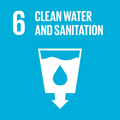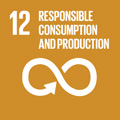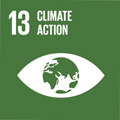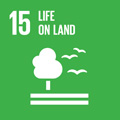- Docente: Paola Mattarelli
- Credits: 6
- SSD: AGR/16
- Language: Italian
- Moduli: Paola Mattarelli (Modulo Mod 1) Loredana Baffoni (Modulo Mod 2)
- Teaching Mode: Traditional lectures (Modulo Mod 1) Traditional lectures (Modulo Mod 2)
- Campus: Bologna
- Corso: Second cycle degree programme (LM) in Agricultural Sciences and Technologies (cod. 9235)
-
from Feb 20, 2023 to May 23, 2023
-
from Feb 23, 2023 to May 25, 2023
Learning outcomes
At the end of the course the student has acquired up to date knowledge on application of microorganisms to improve soil fertility and to transfer information to agricultural operators. Additional learning outcomes will be from aspects related to managing and monitoring microbiological process of rhizosphera and interaction between plant and microorganisms fundamental for correct managing of plant nutrition in agriculture.
Course contents
Module 1: MICROBIOLOGICAL ASPECTS OF NUTRITION (30 hours)
• Brief review of general microbiology and microbial taxonomy with Nagoya protocol: it will be managed on the basis of the general microbiology knowledge of the cohort of students (4-5 hours).
• Culture-dependent and culture-independent techniques for the study of soil microorganisms: Techniques for isolation and phenotypic characterization of microorganisms; fingerprinting techniques; Denaturing Gradient Gel Electrophoresis (DGGE); PCR and Real Time PCR; traditional DNA sequencing techniques and Next Generation Sequencing (NGS) platforms.
Associations and interactions between soil microorganisms: Positive and negative associations between soil microorganisms; biofilms; quorum sensing: general information, chemical mediators, examples of quorum sensing in Gram-positive and Gram-negative bacteria.
• Activity of microorganisms in the soil and role in biogeochemical cycles: Soil as a resource to be protected; decomposition of complex polymers in soil; role of microorganisms in the soil carbon cycle; degradation of complex polymers in soil (starch, hemicellulose, pectin, chitin, cellulose, lignin); humus formation; role of microorganisms in nitrogen cycle in the biosphere (proteolysis and ammonization, ammonium assimilation, nitrification, assimilative or dissimilative reduction of nitrate, denitrification, nitrogen fixing); sulphur cycle; phosphorus cycle.
• Nitrogen fixing: Free (non-symbiotic) nitrogen fixing bacteria that do not photosynthesize; nitrogen-fixing bacteria and biocoenosis relationships; photosynthesizing free nitrogen fixing bacteria; nitrogen-fixing chemolithotrophic bacteria; symbiotic nitrogen fixing bacteria; nitrogenase; oxygen protection mechanisms implemented by the various microorganisms.
• The rhizosphere and the plant microorganism associations: The rhizosphere and its microbial communities; methods for the study of microbial diversity in soil; Mycorrhizae; Actinorhiza.
• Microbiological parameters for water irrigation
• The composting process: Definition of compost and usable substrates; microbial successions in the composting process; microbiological and chemical-physical parameters involved in the composting process; compost stability. Compost microbiological safety requirements.
• Silage process: biomasses for silage and microbial fermentation
Skills acquired in module 1: Structure and function of the main microbial groups in soil and plants and role of microorganisms in the organic matter cycle in soil.
Module 2: RHYZOSPHERE-PLANT BACTERIA INTERACTION, EPIPHYTES AND ENDOPHYTES (30 hours)
• Bacteria that promote plant growth: Definition of PGPR and their role in soil fertility; action of PGPR in promoting plant growth.
• Interaction between plants and microorganisms mediated by volatile organic compounds (VOC): VOC for growth promotion, modulation of photosynthesis, mineral uptake, resistance to biotic and abiotic stresses. Implication of VOCs in hormone-dependent cross-talk. VOCs and recruitment of beneficial insects.
• Endophytes and the seed microbiota: What are endophytic microorganisms, types of endophytic microorganisms and their function in promoting growth. Hints on endophytic fungi. Diversity, phylogeny and colonization mechanisms of seed endophytes. Functionality of the seed microbiota.
• Microbial inoculants: Description of the different types of microbial inoculants that can be used in agricultural and plant nursery production; basic techniques for their preparation and use.
• Biopesticids: new methodology and sustainability for the crop defence
• Agrobacterium and plant nutrition
• Laboratory activities: if the anti-COVID 19 regulations allow it, a laboratory activity will be carried out aimed at the isolation of endophytic bacteria from a biological matrix and characterization of the bacteria isolated through analysis of 16S rDNA.
Skills acquired in module 2: Characterization of the rhizospheric and endophytic microbiota (of the plant and of the seed) and molecules involved in the microorganism-plant cross-talk
The course also includes an educational visit to a company that produces microbial inoculants.
Readings/Bibliography
Biavati B., Sorlini C. Microbiologia agroambientale. Casa Editrice Ambrosiana
Paola Barbieri, Giuseppina Bestetti, Enrica Galli e Davide Zannoni. Microbiologia ambientale. Casa Editrice Ambrosiana
Teaching methods
The course is based on 2 teaching units. Moreover practical activities are provided.
Theoretical teaching units. The student will acquire knowledge on microbiological aspect of plant nutrition.
Practical activities. It will refer to the recent research and applications, in addition an excursion to a company working on the field will be performed. The activities will be conducted in respect to anticovid regulations.
In consideration of the types of activities and teaching methods adopted, the attendance of this training activity requires the performance of all students of Modules 1 and 2 in e-learning modules and the participation in Module 3 of specific training on safety and health in the places of study. Information on dates and methods of attendance of Module 3 can be consulted in the specific section of the degree program website.
Assessment methods
The learning test for this course is made through a final written examination, carried out together with the module of Microbiology of Nutrition of the integrated course. The written exam is made of 24 multiple choice questions (1 point for each correct answer) and two open answer questions about the two modules of the integrated course (maximum 3 points for each correct answer). You can, on request, sustain the final exam in English.
Teaching tools
The class rooms are equipped with video and overhead projectors, PC and Wi-Fi connection. The teacher will use the slides available with the text book. The practical parts will be performed in laboratories dedicated to this activities.
Office hours
See the website of Paola Mattarelli
See the website of Loredana Baffoni
SDGs




This teaching activity contributes to the achievement of the Sustainable Development Goals of the UN 2030 Agenda.
